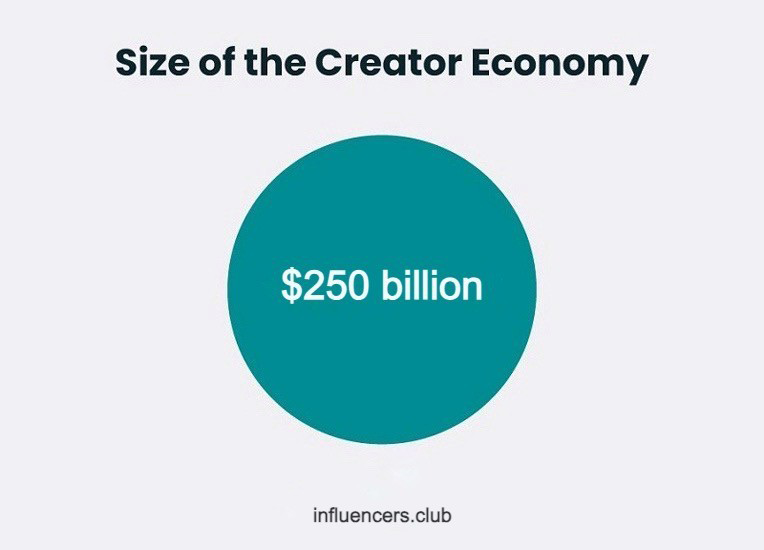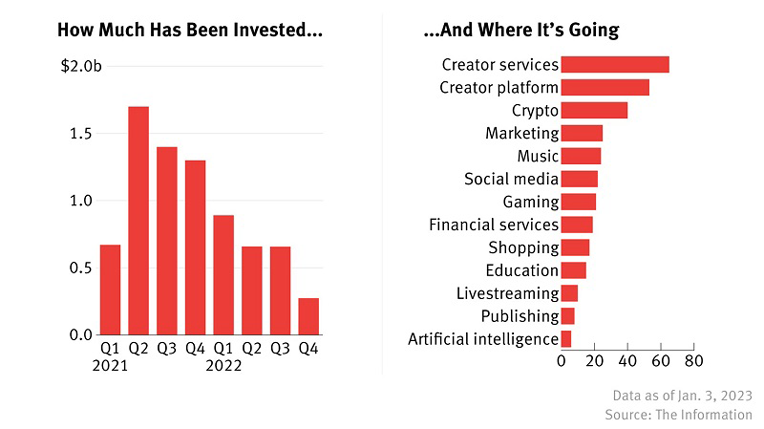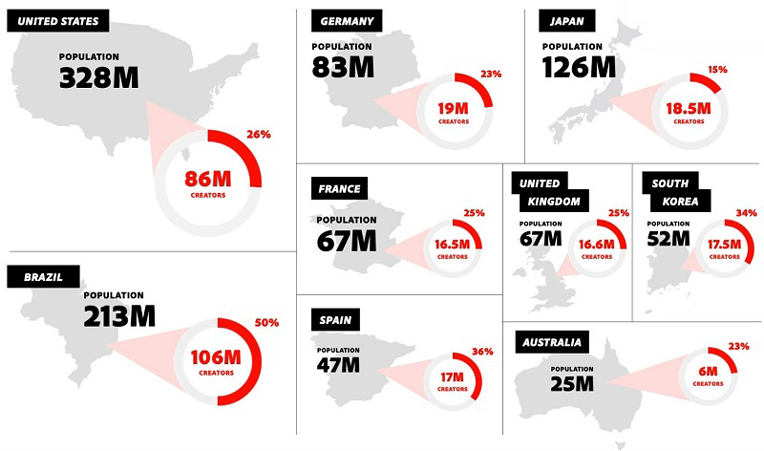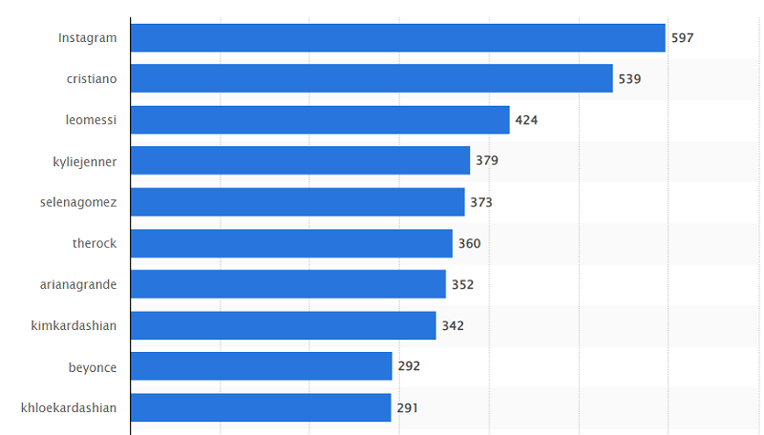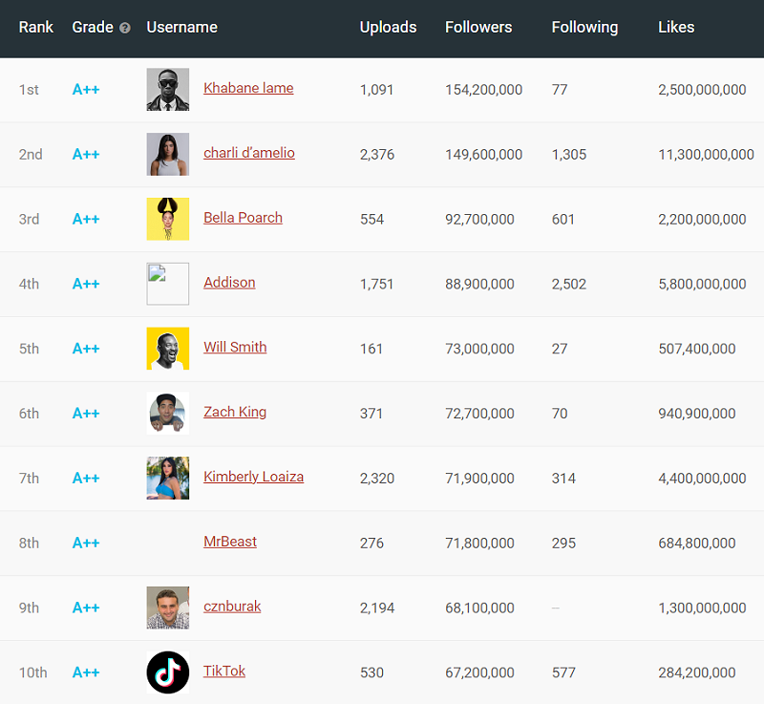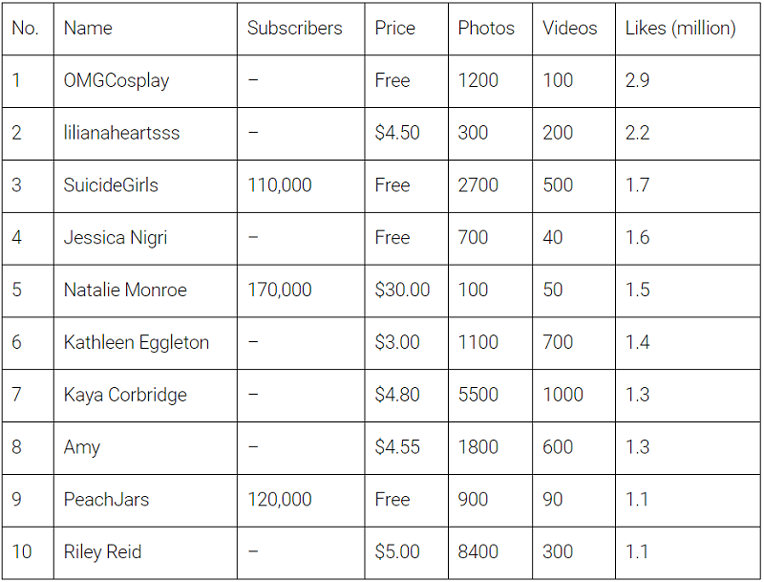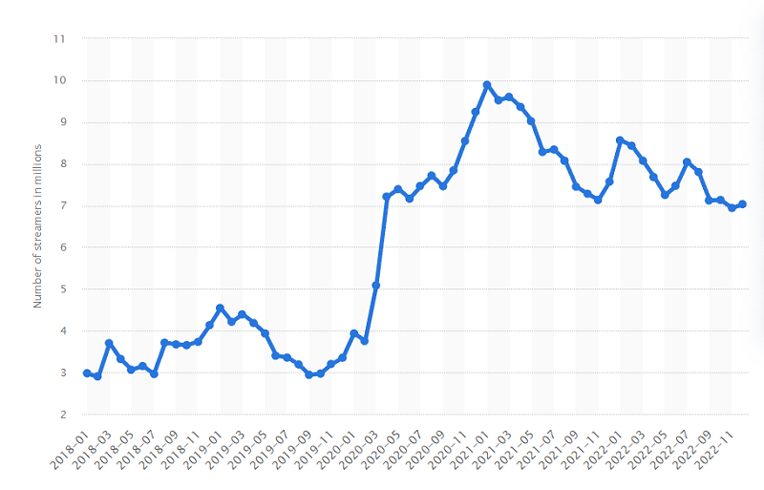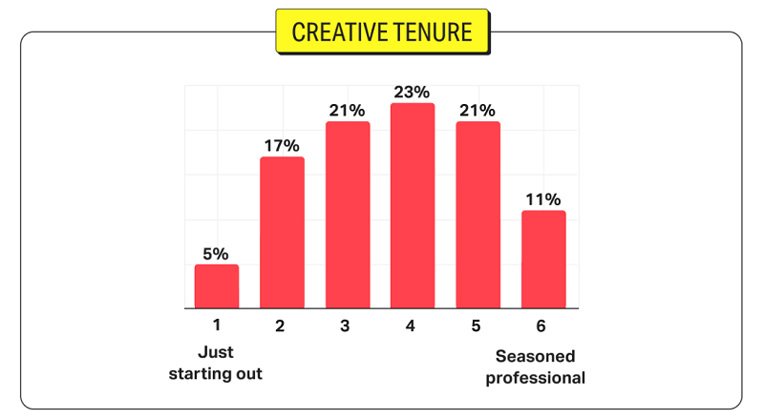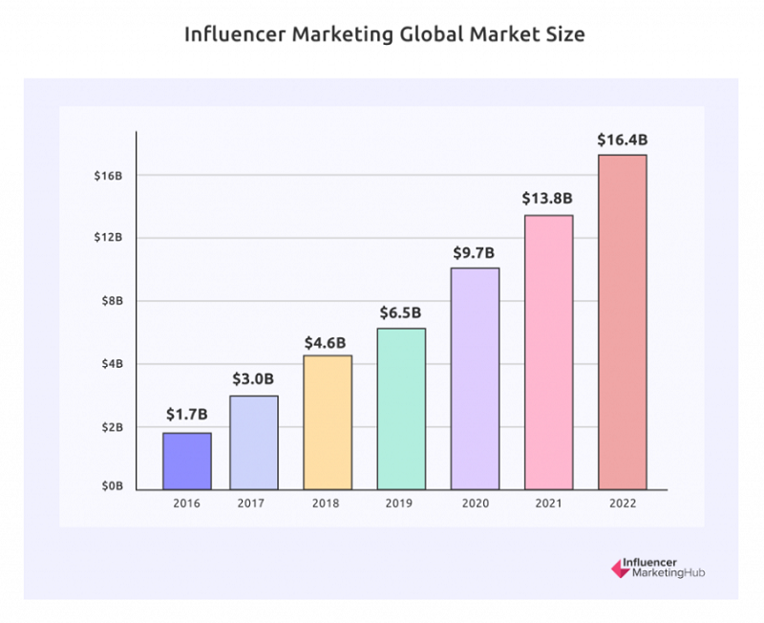What’s the current creator economy market size?
The creator economy market size is currently estimated at $250 billion in 2023 (up from $104.2 billion in 2022). The creator economy it’s expected to nearly double in size by 2027.
The number of creators grew drastically in the last couple of years. They polished their skills, found ways to monetize their content, and became solopreneurs.
This expansion led to the birth of creator economy startups, offering platforms, tools, and services that enable creators to maximize their growth and revenue.

How many startups are in the creator economy?
There are more than 500 creator economy startups according to Patreon CEO Jack Conte. These startups help creators through every step of the creator work cycle, from content creation to off-platform monetization to audience management.
Before the creator economy exploded, creators didn’t have a wide variety of platforms to choose from. YouTube, Instagram, and Facebook were the conglomerates that had taken over the Internet. Naturally, creators gravitated to these platforms.
Over time the needs of creators changed, and new creator platforms started popping up.
Content creation tools, streaming platforms, monetization tools, crowdfunding platforms, etc. They offered better tools and services than the tech giants that dominated the space, allowing creators to diversify their online presence and revenue streams.
Valuation of creator economy startups
Creator economy startups have attracted major investments, especially in 2021. The total valuation of creator economy startups was $5 billion, with Q2 being the record for investments, totaling $1.7 billion.
However, the economic downturn made investors pull back. Even though funding rounds in Q1 of 2022 totaled $1 billion, funding continued to drop throughout the year, down to 50% from the previous year.
Q4 of 2022 was by far the worst quarter, marking it the sixth sequential drop in quarterly funding, totaling only $274 million.

Many creator startups were acquired or completely shut down.
According to The Information, 5 creator startups sold to other companies, including notable startups like merch company Spring, influencer marketing platform Dovetale, and subscription service Fanfix.
Digital storybook platform Kangaroo, video meme app Neverthink, and fan monetization platform Notify were amongst the creator startups that shut down in 2022.
I’ve talked in detail about creator economy startups and funding in another article + you can get our Creator Economy Database with 300+ startups for free.
How many creators are in the creator economy?
There are an estimated 303 million creators in the creator economy, according to Adobe.
That means that 1 in 4 people are creators, or an average of 23% of all people. A 100 million boost since last year’s estimation by Linktree. And in 2024, the number of creators is expected to grow to 400 million.

To give a clear definition of what a content creator is, it’s a person who uses their influence, skills, and creativity to amass and monetize an audience online.
You can categorize creators by niche (beauty, gaming, fitness, etc.), by size (nano-creators, micro-creators, macro-creators, etc.), or by the platform they use (YouTube, Instagram, Tiktok creators, etc.).
Number of creators by platform
It’s hard to determine the specific number of creators by platform because there are far too many platforms at this point. But we can always analyze the biggest platforms in the space.
Some are very open about their stats while others keep quiet.
YouTube
There are over 51 million YouTube channels as of 2022. Not to be confused with the number of users, which is a lot bigger. 2 billion to be exact.

There are more than 600 channels that have 10 million followers. Some, like the channels in this chart, have much more than that. There are also more than 29.000 channels that have more than 1 million followers. Insane numbers, right?
Instagram
Even though YouTube offers the best monetization model for creators, Instagram is the most popular platform for creator monetization with 72% of creators using it as a primary revenue stream.
Up until recently, Instagram has been wary of sharing statistics about creators and influencers. Plus, it’s hard to determine a specific number when there are many Instagram accounts that are inauthentic and fraudulent.
However, we can always estimate, and it’s estimated that there are over 3.5 million Instagram creators from all niches and sizes.

The biggest Instagram influencers have massive followings. I’m talking hundreds of millions of followers. Other than Instagram’s page, the top spot goes to Christiano Ronaldo, who amassed a following of more than 500 million.
Tiktok
The title of the fastest-growing platform of all social media platforms has to go to Tiktok.
With the highest overall engagement rate and the most downloaded app of 2020 and 2021, it’s no surprise that creators took it and ran with it.
Tiktok, just like Instagram, is not very open to sharing stats about its creators. But the estimated number of creators is 3.1 million.

Although the number of creators is lower than Instagram’s, the biggest Tiktok creators are not short on followers, with Khaby Lame taking the #1 spot with over 154 million followers.
OnlyFans
OnlyFans is one of the most fascinating creator platforms. Like TikTok, it’s also one of the fastest-growing platforms today, with 2.1 million creators and 210 million registered users.
The platform has paid more than $2 billion to creators so far, and the top OnlyFans creators earn an average of $100K per month.

Twitch
The most popular streaming platform is undoubtedly Twitch. Creators, especially gamers took to it like fish to water, amassing millions of views on a monthly basis.
Twitch saw incredible growth during the Pandemic, growing to 9 million monthly active streamers. But the platform went through a lot of turmoil in 2022.
As of 2023, more Than 1.2 million Twitch Streamers Are Partners or Affiliates.

The platform’s annual convention, TwitchCon was put on blast by creators and brands alike for providing an underwhelming experience. There were reported injuries, with one creator breaking her back in 2 places after jumping into a foam pit.
The platform also updated its revenue sharing model, stating that the rev split will be 70/30 as opposed to the 50/50 split before. Naturally, creators backlashed and thus started leaving the platform.
Patreon
Patreon is a subscription-based crowdfunding platform and is one of the most used monetization platforms by creators. The platform currently hosts more than 250.000 creators.
Creators aren’t restricted by the type and format of their content. Because it’s a subscription-based service, monetization is a lot easier.
And it goes great in cahoots with multiple platforms, migrating the most loyal fans from a platform where they get free content to a platform where creators can monetize them.
This makes Patreon appealing to creators of all sizes and niches.

How much money do creators make?
When you think of the biggest creators and influencers, the answer to this question would be, a lot. Influencers are practically millionaires. But that’s only the top 1%.

These stats by Linktree had people shook, myself included. The fact that 46% of full-time creators make less than $1000 annually is a reality check – it’s not easy for creators to earn money.
Social platforms need to provide multiple (and easier) monetization tools, and creators need to educate themselves on how to monetize and diversify their revenue streams.
Now let’s see how much the top creators actually make:
- YouTube’s 5 highest-paid creators are MrBeast ($54 million), Jake Paul ($45 million), Unspeakable ($38.5 million), Markiplier ($38 million), and Rhett & Link ($30 million).
- This is how much Instagram’s top 5 creators charge per post in 2022 – Christiano Ronaldo ($880k-$1 million), Kylie Jenner ($674k-$1 million), Leo Messi ($652k-$1 million), Selena Gomez ($636k-$1 million), Dwayne Johnson ($628k-$1 million).
- Top 5 highest-earning Tiktokers – Charli D’Amelio ($17.5 million), Dixie D’Amelio ($10 million), Addison Rae ($8.5 million), Bella Poarch ($5 million), Josh Richards ($5 million).
Other earning stats:
- Patreon pays out $1 billion annually to its 250k+ creators;
- OnlyFans pays out more than $1 billion annually to its 1 million+ creators;
- Stripe paid out a total of $10 billion to its creators in 2021;
- Cameo paid out a total of $75 million to its creators in 2020.
The role of Influencer Marketing
Influencer marketing has become a cultural phenomenon, a staple in marketing strategies, and a loyal sidekick to the creator economy. As brands started leveraging influencers to propel their marketing campaigns, a billion-dollar industry was born.

Its growth goes side-by-side with the creator economy, with the market being worth $36.2 million in 2016 and growing to $104.2 billion in 2022.
This correlates to the birth of many platforms, more creators joining the space, short-form videos becoming the main content format, and the impact of the global Pandemic, thus increasing social media activity and screen time.
Let’s summarize
The expansion of the creator economy market is a wonderful thing for everyone in it. We can expect creators and content makers to become community builders, set industry trends, own platforms, and transform into full-fledged businesses.
There will also be more platforms that support creators, providing better ways to create an engaged community, reach their target audience, improve content monetization, and share sponsored content that benefits creators and brands alike. Although funding has slowed down and is unpredictable at the moment, the space will continue to go up in the upcoming years. If anything, the startups that push through these tough times are the ones that will reach the top.

